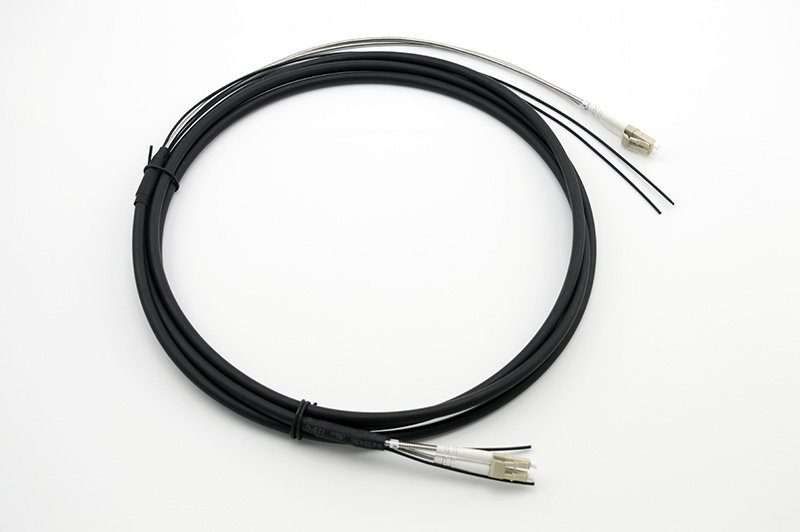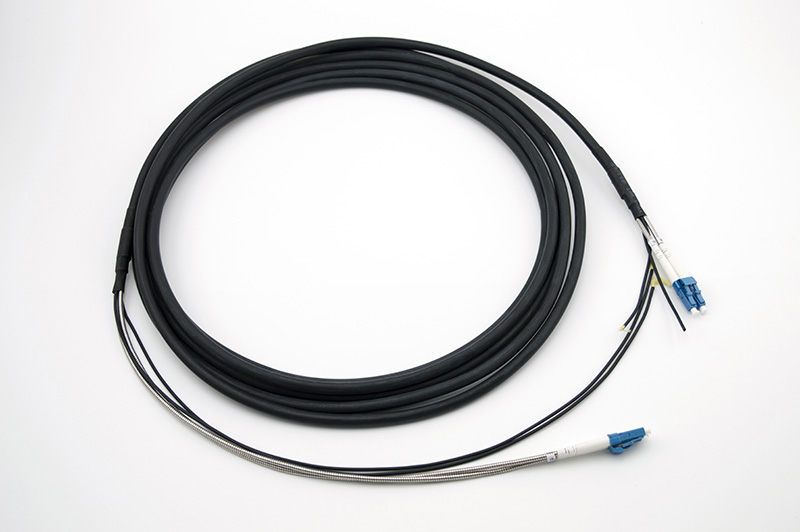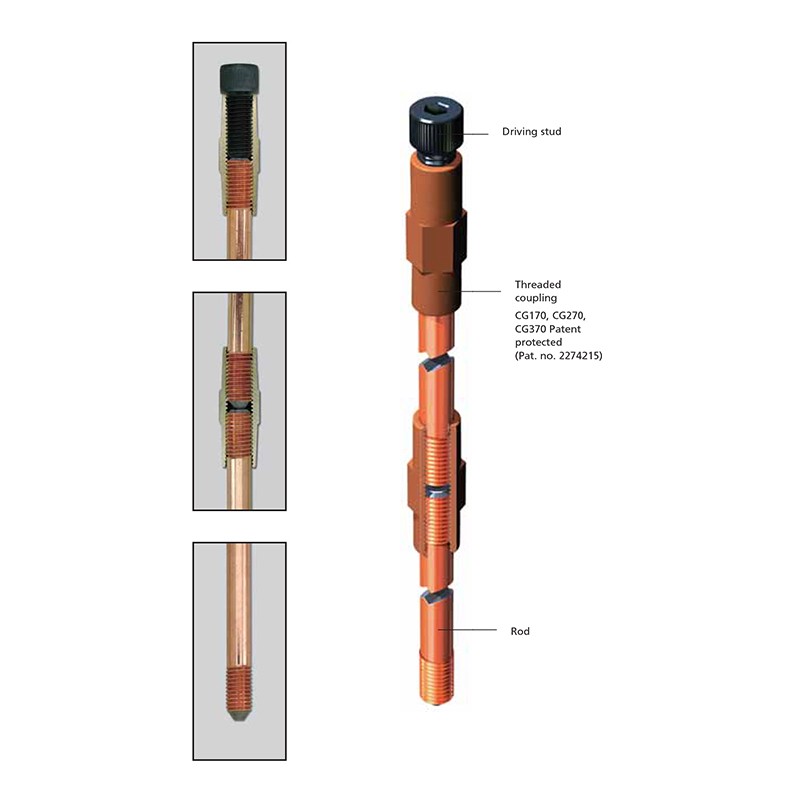Introduction
In the realm of modern telecommunications, the demand for high-speed, reliable communication channels continues to grow. Among the various options available, ADSS (All-Dielectric Self-Supporting) fiber optic cables have emerged as a top choice for overhead transmission lines. This article explores why ADSS fiber optic cables stand out, delves into their installation tips, and highlights their real-world applications.
Advantages of ADSS Fiber Optic Cables
1. Self-Supporting Structure
ADSS fiber optic cables are specifically designed for aerial installation without requiring additional support structures. This self-supporting capability allows the cables to be suspended directly from utility poles or transmission towers. This design reduces the need for extra infrastructure, leading to significant cost savings in both materials and labor.
2. All-Dielectric Design
The all-dielectric construction of ADSS cables means they do not contain any metallic components. This feature provides several benefits:
Safety: The lack of metallic elements eliminates the risk of electrical hazards. This makes ADSS cables a safe choice for installation near high-voltage power lines.
Corrosion Resistance: Without metal, ADSS cables are immune to corrosion, ensuring durability and longevity even in harsh environmental conditions.
3. High Performance and Capacity
ADSS fiber optic cables are designed to support high data transmission rates, making them ideal for modern communication needs. They offer:
High Bandw: Capable of handling large amounts of data, ADSS cables meet the increasing demand for fast and reliable internet and communication services.
Low Signal Attenuation: High-quality fibers within ADSS cables ensure minimal signal loss over long distances, maintaining optimal performance.
4. Environmental and Mechanical Resilience
ADSS cables are engineered to withstand a variety of environmental factors:
UV Resistance: The materials used are resistant to ultraviolet radiation, preventing degradation from sun exposure.
Temperature Extremes: ADSS cables function reliably across a wide temperature range, from freezing cold to scorching heat.
Mechanical Strength: They are built to endure physical stresses such as wind and ice loads, which are common in overhead installations.
Installation Tips for ADSS Fiber Optic Cables
1. Conduct a Thorough Site Survey
Before installation, perform a comprehensive site survey to assess the existing infrastructure and plan the cable route. Evaluate the condition of utility poles or towers and check for any obstacles or potential hazards along the installation path.
2. Select the Appropriate Cable Specifications
Choose ADSS fiber optic cables based on your specific installation requirements:
Fiber Count: Determine the number of fibers needed to support your network’s capacity.
Cable Diameter: Select a diameter that fits the pole or tower structures while ensuring adequate strength and flexibility.
Temperature Ratings: Ensure the cable can handle the temperature extremes of the installation environment.
3. Proper Tensioning and Anchoring
Correct tensioning and anchoring are crucial for maintaining cable integrity:
Tensioning: Use tensioning equipment to install the cables with the appropriate tension. Excessive tension can cause stretching and damage, while insufficient tension can lead to sagging.
Anchoring: Secure the cables to anchors or attachments as specified by the manufacturer to prevent movement and strain on the cable.
4. Avoid Sharp Bends and Kinks
Maintaining the proper bend radius is essential to avoid damage:
Minimum Bend Radius: Follow the manufacturer’s guidelines for the minimum bend radius to prevent fiber breakage and signal loss.
Bend Radius Indicators: Use bend radius indicators or guides during installation to ensure cables are not bent beyond their tolerance.
5. Ensure Proper Splicing and Connection
High-quality splicing and connections are vital for optimal performance:
Splicing Techniques: Use advanced splicing techniques and equipment to achieve low splice loss and high connection reliability.
Inspection: Inspect splices and connections for quality and adherence to standards to prevent future issues.
6. Implement a Maintenance Plan
Regular maintenance helps ensure long-term performance:
Inspection Schedule: Establish a routine inspection schedule to check for signs of wear, damage, or performance degradation.
Maintenance Procedures: Follow best practices for maintaining ADSS cables, including cleaning and repairing as needed.
Real-World Applications of ADSS Fiber Optic Cables
1. Telecommunications Networks
ADSS fiber optic cables are extensively used in telecommunications networks to provide high-speed internet, telephone services, and cable television. Their ability to deliver high bandwidth and low signal attenuation makes them ideal for meeting the increasing data demands in urban and rural areas.
2. Power Transmission and Distribution
In power transmission and distribution networks, ADSS cables are often installed alongside high-voltage power lines. Their self-supporting nature allows for easy integration into existing infrastructure without disrupting power services. This setup enhances communication capabilities for monitoring and managing power distribution.
3. Smart Grid Systems
Smart grids rely on real-time data collection and monitoring to improve efficiency and reliability. ADSS fiber optic cables enable high-speed communication between various components of a smart grid, facilitating better management of energy resources and enhancing grid stability.
4. Campus and Enterprise Networks
In educational institutions and large enterprises, ADSS cables are used to connect multiple buildings within a campus or business complex. Their flexibility in installation and high performance support the extensive networking needs of these environments, ensuring seamless communication and data transfer.
5. Rural and Remote Areas
For extending communication infrastructure to rural and remote areas, ADSS fiber optic cables offer a practical solution. Their capability to be installed on existing utility poles or towers reduces the need for new infrastructure, making it cost-effective to bring high-speed internet and communication services to underserved regions.
Conclusion
ADSS fiber optic cables have proven to be an exceptional choice for overhead transmission lines, thanks to their self-supporting design, durability, and high-performance capabilities. Their ability to withstand harsh environmental conditions and deliver reliable, high-speed communication makes them ideal for various applications, from telecommunications and power distribution to smart grids and rural connectivity.
By following the installation tips provided and understanding the diverse applications of ADSS fiber optic cables, you can ensure a successful deployment that meets your network’s needs. Embrace the advantages of ADSS fiber optic cables and experience the benefits of cutting-edge communication technology.
For more detailed information or to discuss your specific requirements, consult with industry experts and explore the latest advancements in ADSS fiber optic cables.












